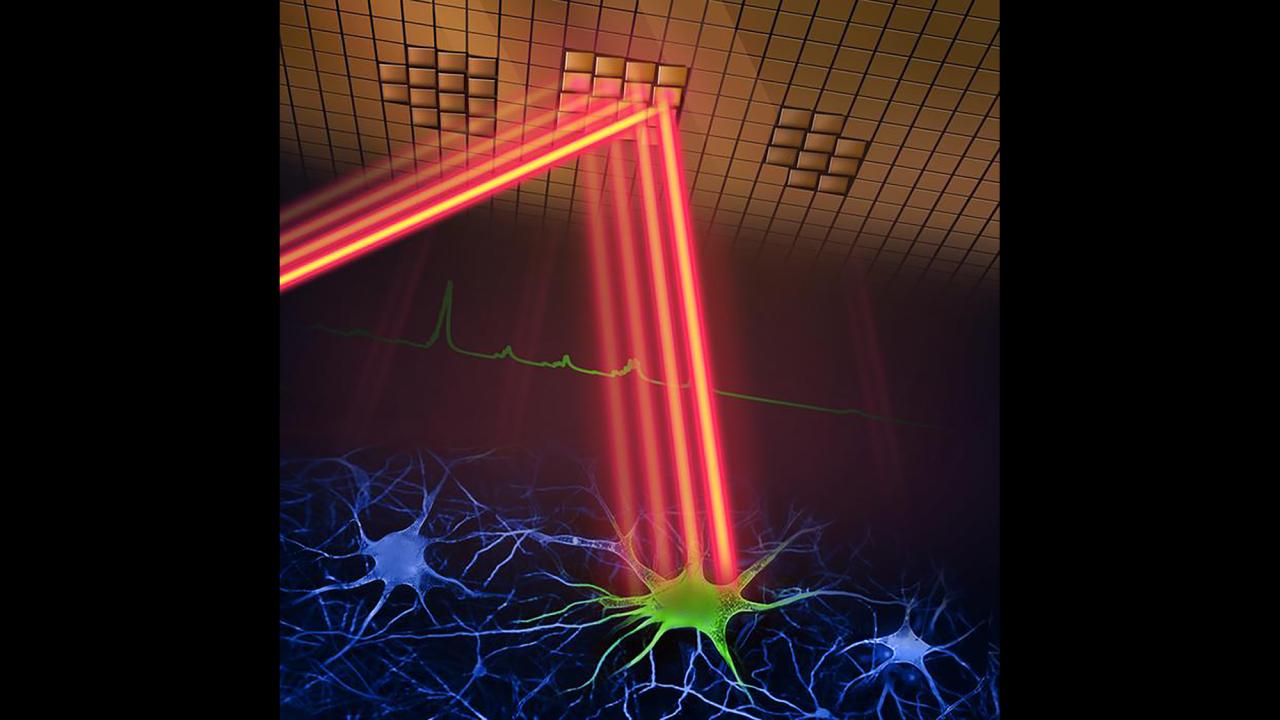Researchers at UC Davis have developed a new microscope to capture high-speed images of brain cell activity with less harm to brain tissue. The new approach could be used in research with mice to provide a clearer view of how neurons communicate in real time, leading to new insights into brain function and neurological diseases.
“Our new microscope is ideally suited for studying the dynamics of neural networks in real time, which is crucial for understanding fundamental brain functions such as learning, memory and decision-making,” said research team leader Weijian Yang, associate professor in the Department of Electrical and Computer Engineering at UC Davis. “For example, researchers could use it to observe neural activity during learning to better understand communication and interaction among different neurons during this process.”
The new microscope, based on a technique called two-photon fluorescence microscopy, is described in Optica.
“By providing a tool that can observe neuronal activity in real time, our technology could be used to study the pathology of diseases at the earliest stages,” said Yunyang Li, first author of the paper. “This could help researchers better understand and more effectively treat neurological diseases such as Alzheimer’s, Parkinson’s and epilepsy.”
High speed imaging with less damage
Two-photon microscopy can image deep into scattering tissue such as a mouse brain by scanning a small point of light across the entire sample area to excite fluorescence and then collecting the resulting signal point by point. This process is then repeated to capture each imaging frame. Although two-photon microscopy provides detailed images, it is slow and can damage brain tissue.
The researchers aimed to overcome these limitations by using a short line of light, instead of a spot, to illuminate specific parts of the brain where neurons are active. This enables a larger area to be excited and imaged at once, thus speeding up the imaging process significantly. Also, because it only images neurons of interest — not the background or inactive areas — the total light energy deposited to the brain tissue is reduced, lowering the risk for potential damage.
The researchers accomplished this by using a digital micromirror device (DMD). This is a chip containing thousands of tiny, individually controlled mirrors that can dynamically shape and steer the light beam, enabling precise targeting of active neurons. They achieved adaptive sampling by using advanced computational algorithms to turn individual DMD pixels on and off in a way that adapts to the neuronal structure of the brain tissue being imaged.
The researchers also developed a technique to use the DMD to mimic high-resolution scanning. This allows a high-resolution image to be reconstructed from faster scans, providing a quick way to identify neuronal regions of interest.
“These developments — each crucial on their own — come together to create a powerful imaging tool that significantly advances the ability to study dynamic neural processes in real time, with reduced risk to living tissue,” said Yang. “These advancements also reduce the time and resources needed to obtain high-quality images and make the approach easy to combine with other techniques like multiplexing and remote focusing.”
Capturing neural activity
The researchers demonstrated the new microscope by using it to image calcium signals, which are indicators of neural activity, in living mouse brain tissue. The system captured these signals at a speed of 198 Hz, which is significantly faster than traditional two-photon microscopes and demonstrates the ability to monitor rapid neuronal events that would be missed by slower imaging methods. They also showed that the adaptive line-excitation technique coupled with advanced computational algorithms makes it possible to isolate the activity of individual neurons.
Next, the researchers are working to integrate the ability to image voltages in cells into the microscope to capture a direct and extremely rapid readout of neural activity. They also plan to use the new method for real neuroscience applications, such as observing neural activity during learning and studying brain activity in disease states.
Additional coauthors are Shu Guo, Ben Mattison, Junjie Hu and Kwun Nok Mimi Man, all at UC Davis. Funding was provided by the Burroughs Wellcome Fund, the National Science Foundation, National Institute of Neurological Disorders and Stroke and National Eye Institute.
Media Resources
High-speed two-photon microscopy with adaptive line-excitation (Optica)
Adapted from a news story published by Optica Publishing Group. Nancy D. Lamontagne is a writer with Optica Publishing Group (formerly Optical Society of America).
